To enable optimal lighting of the road by the headlight, a number of factors should be considered such as the cleanliness of reflector and plexiglas (perspex) cover, adequate fixation, the right lamp as well as the correct adjustment. A headlight with faulty adjustment could blind oncoming traffic or fail to illuminate the road. Both can lead to dangerous situations when driving in the dark. Read in this manual, how to simply adjust your car headlights at home.
Before you start…
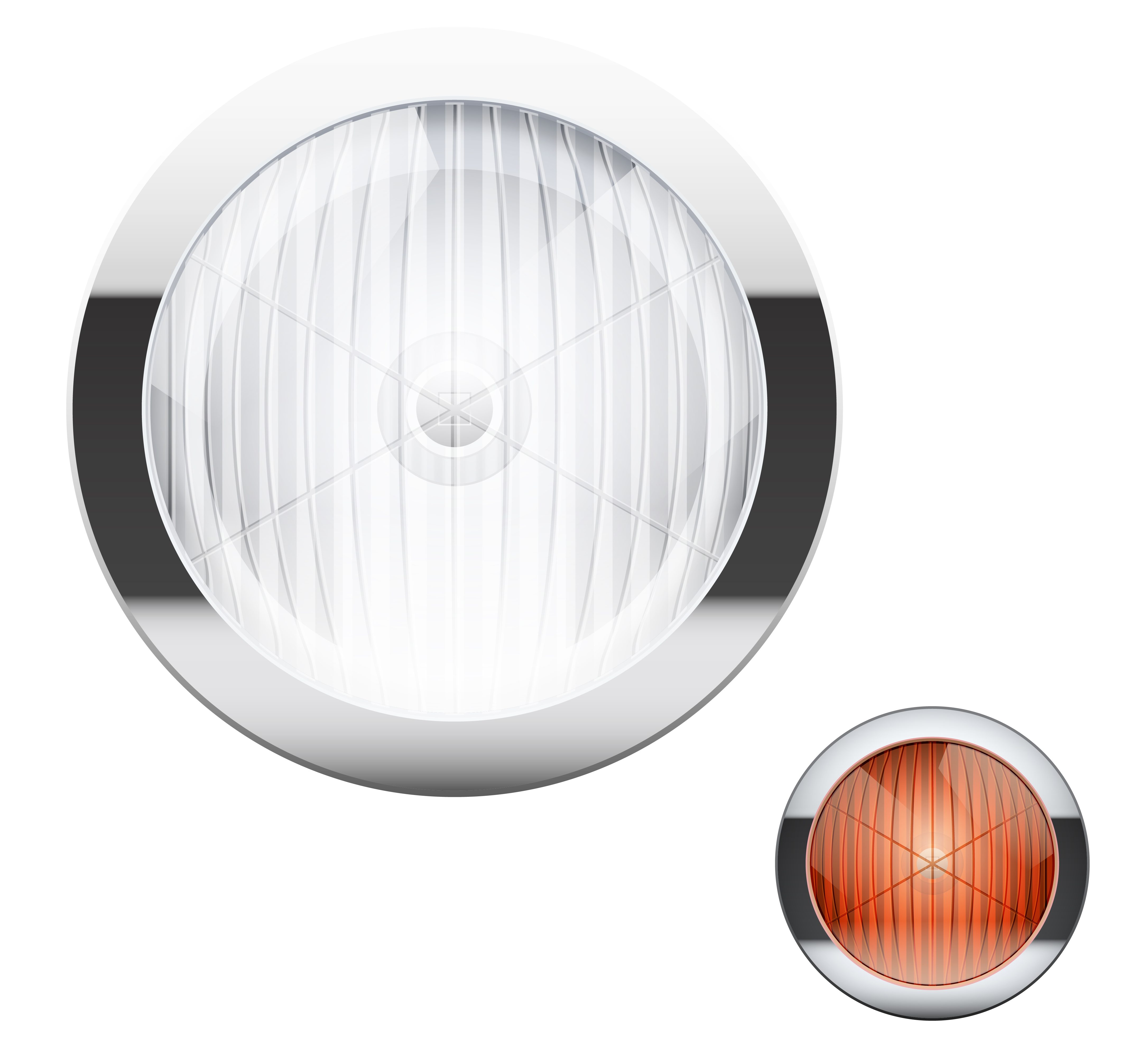 Just like other design elements of the car, headlights are subject to fashion trends. Tail fins and pop-up headlights came and went, and now we find ourselves in the era of the plexiglas (perspex) headlight covers. These clear covers installed at assembly are made of plastic, a quality downgrade in comparison to the earlier car headlights with hard frosted glass. There are plenty of reasons for this change, but in essence a wear part had been created.
Just like other design elements of the car, headlights are subject to fashion trends. Tail fins and pop-up headlights came and went, and now we find ourselves in the era of the plexiglas (perspex) headlight covers. These clear covers installed at assembly are made of plastic, a quality downgrade in comparison to the earlier car headlights with hard frosted glass. There are plenty of reasons for this change, but in essence a wear part had been created. 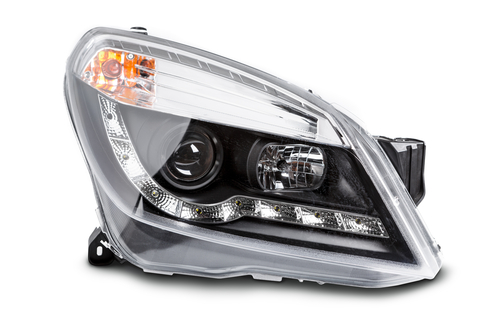 Plexiglas covers easily scratch and become dull and will ultimately fail a MOT test.
Plexiglas covers easily scratch and become dull and will ultimately fail a MOT test.
In this case the car industry recommends replacement. What makes it complicated, is the fact that covers are not available as a wear or replacement component. Often, in case of a dull cover, the entire headlight has to be replaced and as a car has two headlights, this particularly benefits the spare part trade.
Firstly, repair can be attempted, which costs next to nothing:
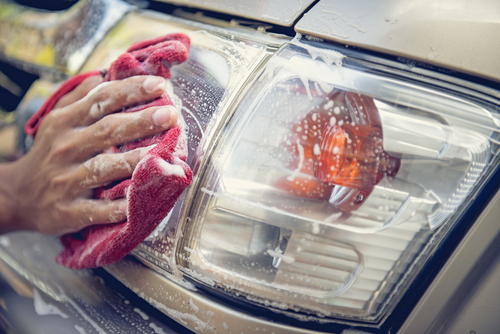 The accessory retail offers special polishing sets for headlight maintenance. With a bit of practice even severely scratched and dull headlights can be restored to their original clarity. This is a somewhat cumbersome task, though worthwhile considering the costs. Only when this rescue attempt has failed, the glass or the entire headlight has to be replaced. Household solutions such as toothpaste often do not attain a satisfactory result. In case of cracked or broken glass or a dull and rusty reflector, complete replacement is the only option. For old cars with little residual value a visit to the recycler may prove useful. He often has car headlights of all types in store.
The accessory retail offers special polishing sets for headlight maintenance. With a bit of practice even severely scratched and dull headlights can be restored to their original clarity. This is a somewhat cumbersome task, though worthwhile considering the costs. Only when this rescue attempt has failed, the glass or the entire headlight has to be replaced. Household solutions such as toothpaste often do not attain a satisfactory result. In case of cracked or broken glass or a dull and rusty reflector, complete replacement is the only option. For old cars with little residual value a visit to the recycler may prove useful. He often has car headlights of all types in store.
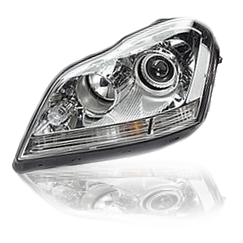
Car headlights • Largest selectioncheaply up from £13,70Order now ⇒ |
Manual for car headlights adjustment
A correctly adjusted headlight is MOT relevant. It is therefore useful to check and if necessary to adjust the headlight prior to visiting the MOT station. For this you need:
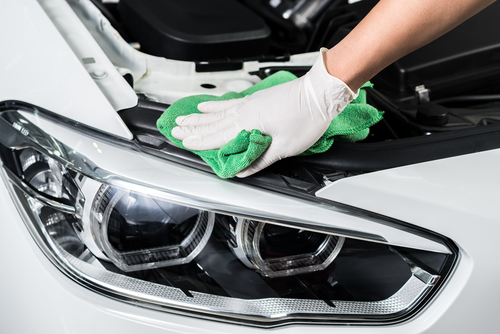 – 1 flat, smooth area or field ideally bordered by a white wall – 1 flat, smooth area or field ideally bordered by a white wall(Parking garages are ideally suitable) – Printing paper – Pencil – Yardstick – Broad, coloured insulation tape – Possibly a long screwdriver |
Prior to headlight adjustment the following should be checked:
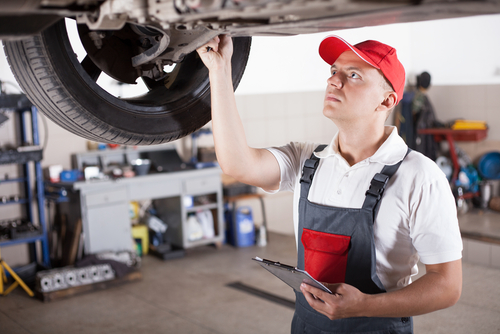 1. Air pressure in all tyres correct? 1. Air pressure in all tyres correct?2. Shock absorber in order? 3. Headlight beam adjuster on zero (highest point)? |
These checks are essential to ensure that the car is standing straight. Furthermore the headlight levelling control should be checked. A headlight levelling system is compulsory in the EU and the UK.
1. Place the car at an exact distance of 10 m in front of the wall
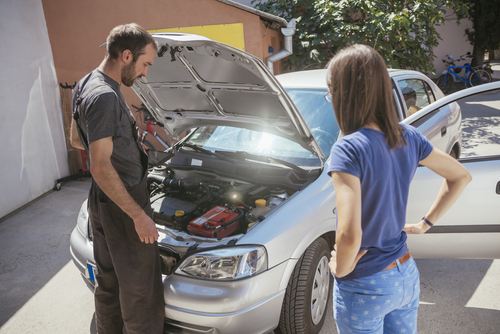 The 10 m distance is ideal for calculating the desired and the actual values.
The 10 m distance is ideal for calculating the desired and the actual values.
The headlight inclination is different for every car.
The distance of 10 m enables easy calculation.
If only 5 m are available, the calculated result must be divided by two.
The distance should never be less than 5 m.
2. Find the top edge of the light emission surface
The top edge of the light emission surface of the dipped car headlights can be measured with a white sheet of paper and a yardstick. Stand in front of the car and hold the sheet in front of the headlight. You will notice that the beam has a brightly shining top area. The darker bottom area is stray light which should be ignored. Measure the height of the top edge of the light emission surface and write it down.
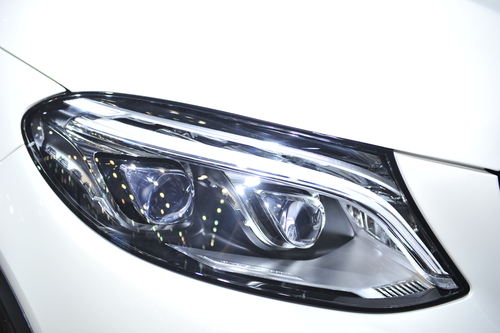 On this occasion you can also measure the bottom edge of the light emission surface. It should not be lower than 500 mm. This applies to every vehicle, including motorcycles.
On this occasion you can also measure the bottom edge of the light emission surface. It should not be lower than 500 mm. This applies to every vehicle, including motorcycles.
If this edge is lower, this constitutes a serious defect probably causing the car to fail MOT inspection.
This problem more often occurs in cars with a low ground clearance. Even though the suspension was originally permitted, gradual sinking of the suspension may have caused a change of this threshold value.
3. Transferring the height of the light emission surface
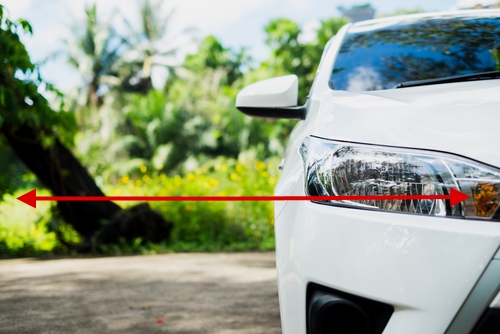 The height of the edge of the light transmission surface is now transferred on the illuminated wall.
The height of the edge of the light transmission surface is now transferred on the illuminated wall.
If the wall is not sufficiently white, attach a sheet of paper on the wall at the corresponding level.
The measured height of the edge of the light emission surface is transferred to the illuminated wall with help of the pencil and the yardstick.
4. Calculating the desired height
With help of the right inclination (generally between 1 and 1,5%) and the distance between vehicle and wall the desired height for the headlight can be calculated. At a distance of 10 m and an inclination of 1% the top edge of the light emission surface should lie 10 cm under the transferred light emission surface edge of the headlight. The desired value is now marked on the wall. The marking is emphasised with a broad piece of coloured insulation tape, so that it is clearly visible at a 10 m distance.
5. Adjusting the headlight
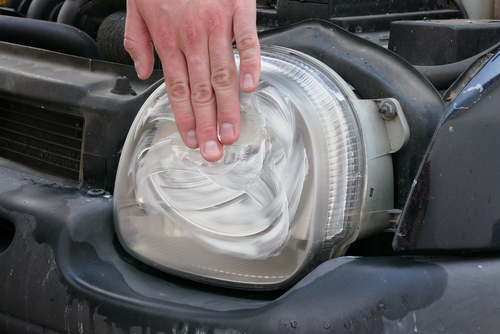 When the desired value is marked on the wall, the headlight can be adjusted with the screwdriver. A few turns should be sufficient. The process is repeated with the other headlamp. Now the car headlights are adjusted, clean and safe. Nothing stands in the way of successful MOT inspection.
When the desired value is marked on the wall, the headlight can be adjusted with the screwdriver. A few turns should be sufficient. The process is repeated with the other headlamp. Now the car headlights are adjusted, clean and safe. Nothing stands in the way of successful MOT inspection.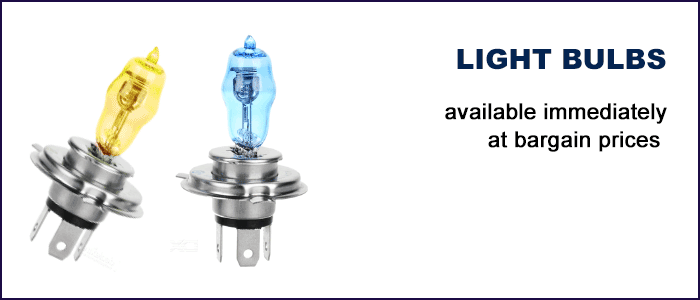
When headlight levelling control is failing
|
Headlight levelling control is compulsory for all cars. In many cars, like e.g. the Fiat Cinquecento or the Volvo 480, headlight levelling control used to be hydraulic. As a result the levelling control often ran dry after 5 years. Refilling or repairing it turned out to be rather complicated and rarely successful. Most headlight levelling control systems are therefore operated electrically. Not only is this considerably more reliable, but also easier to maintain. The headlight levelling control motors are durable and sturdy and can easily be replaced in case of malfunction. However, in most cases, corroded plug contacts or ruptured cables are responsible for headlight levelling control failure. These repairs are simple. If you have a car with hydraulic headlight levelling control, you should check if conversion to an electric module is possible. Surprisingly the levelling control of the Fiat Cinquecento can be replaced by the electric levelling control system of a Volkswagen Polo 86C 2F without any problem. |
Always use the best lamps
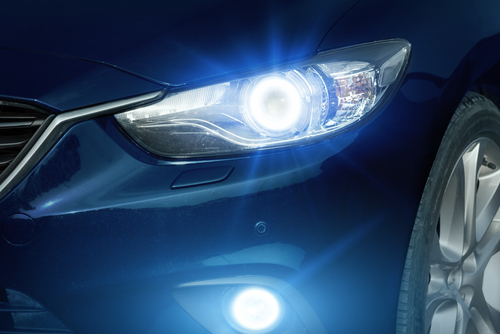 Even older cars without the powerful xenon headlights can be upgraded with more up-to-date lighting. It is essential to use the possible maximum.
Even older cars without the powerful xenon headlights can be upgraded with more up-to-date lighting. It is essential to use the possible maximum. 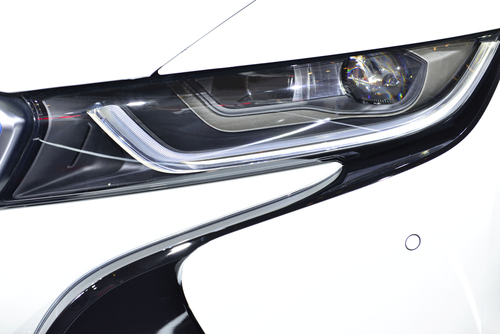 More and better lighting means safe driving and better visibility for other traffic participants.
More and better lighting means safe driving and better visibility for other traffic participants.
If not present, retrofitting of daytime running lights might be useful.
This integration can be done on a Saturday afternoon on occasion of a general car lighting overhaul.
The replacement of old light bulbs for the tailgate lighting and the front and lateral blinkers with LED lamps completes the upgrading, adaptation and adjustment of the lighting system of your car.
Foto: VitaminCo, Jenoche, admin_design, Bhakpong, takoburito, zeljkodan, chin797, Nodty, sima, i viewfinder, Sunny_Images, Corepics VOF / shutterstock.com




 (13 votes, average: 3.31 out of 5)
(13 votes, average: 3.31 out of 5)







